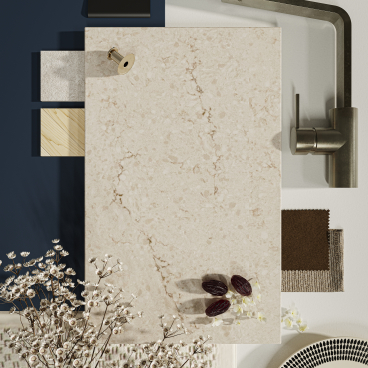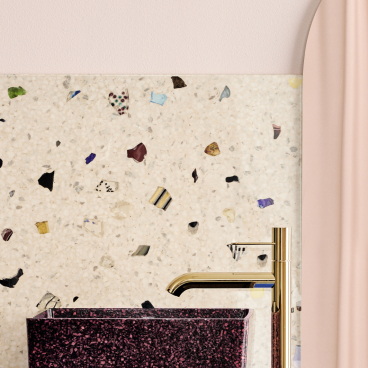PrintCity's Nick Hurst explores a more sustainable 3D printed future with Full Circle Concrete.
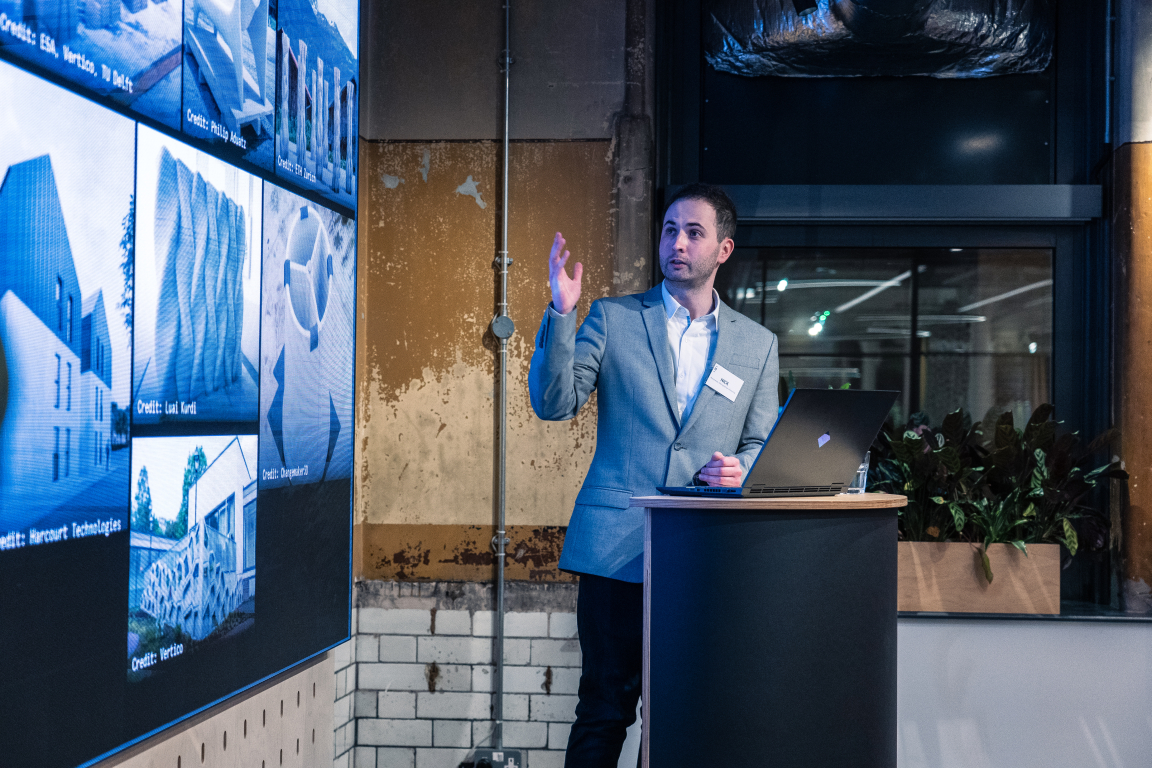
Credit: Tim Ainsworth
Though we may be bringing our physical Full Circle Concrete exhibition to a close, the next step for the project has only just begun.
To kick that off, last week our Manchester Studio hosted a talk and discussion with Nick Hurst of Manchester Metropolitan University's PrintCity, with opening address from Material Source materialist, Emily Bagshaw, to help determine how the Interreg North-West Europe CIRMAP project might evolve from here on out.
Our firm belief is that collaboration between education and industry is key to forging a more sustainable future for the built environment. And with that said, we were delighted to have so many academic, architecture and construction professionals join us, asking thought-provoking, and much needed questions, which will help push this research further.
Thank you to all those who came along to last week's event, and to Nick and the PrintCity team for sharing their innovative ideas with the wider community to help secure a more sustainable future for our buildings. Here's an overview of where the project currently is, and, with your input, some ideas as to where it could go next...
What is the CIRMAP project?
For anyone who couldn't join us at the event, PrintCity’s groundbreaking project, CIRMAP explores the architectural potential of concrete waste, excavated from construction sites across Europe. An Interreg North-West Europe funded project, Nick and his team focused on developing 3D printing mortars using Recycled Fine Aggregates (RFA).
To provide some context, in North-West Europe, 65 Mt of RFA is generated annually from demolition waste, whereas 54 Mt of sand is extracted from marine environments. Sand is the second most consumed natural resource on Earth. Therefore, using RFA as a substitute for sand would save on, and preserve, natural resources.
To demonstrate a successful application of RFA, partner organisations from the UK, France, Germany, The Netherlands, and Belgium - the CIRMAP consortium - developed a new mixture proportioning method with RFA, printing 25 customised street furniture designs, now installed in cities across North-West Europe. In the UK, this marks the first 3D print installation utilising RFA - with the resulting benches using 75% less material than precast concrete versions would.
If you've visited us at Material Source Studio Manchester over the last three months, you'll have likely spotted some of these pieces in situ in our Gallery.
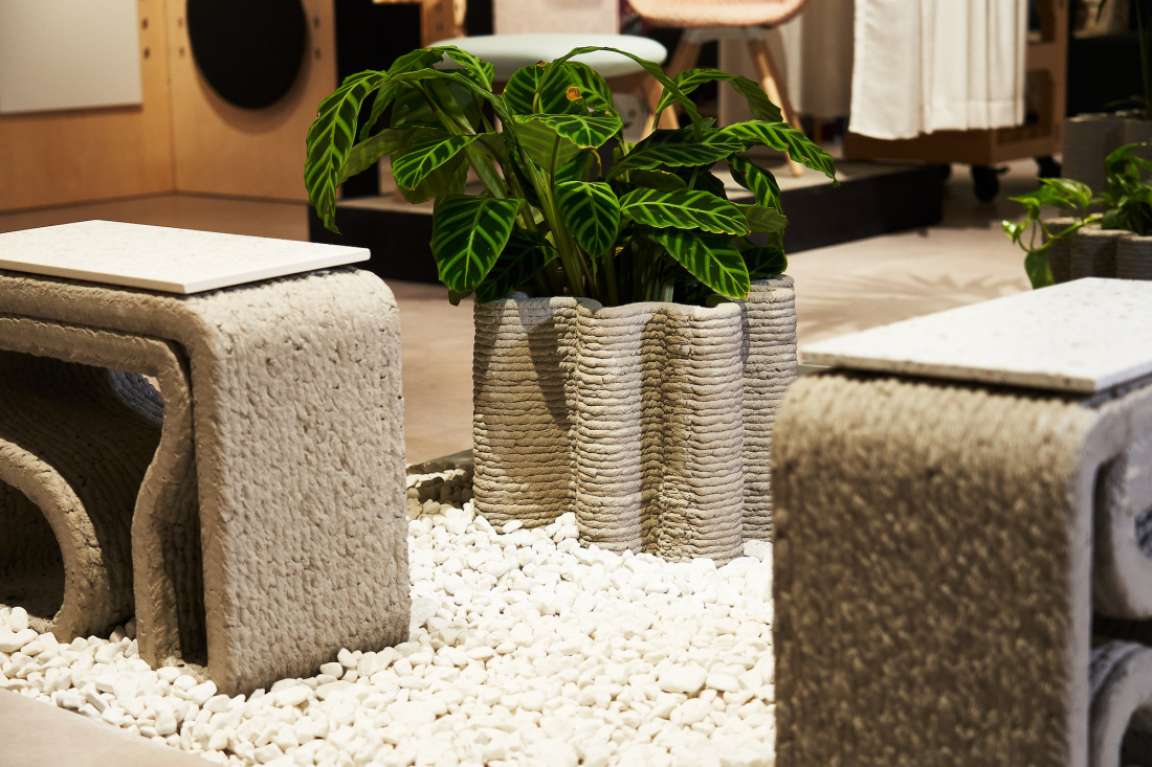
3D printed benches exhibited at the Studio with Polygood tops courtesy of CDUK [Credit: Tim Ainsworth]
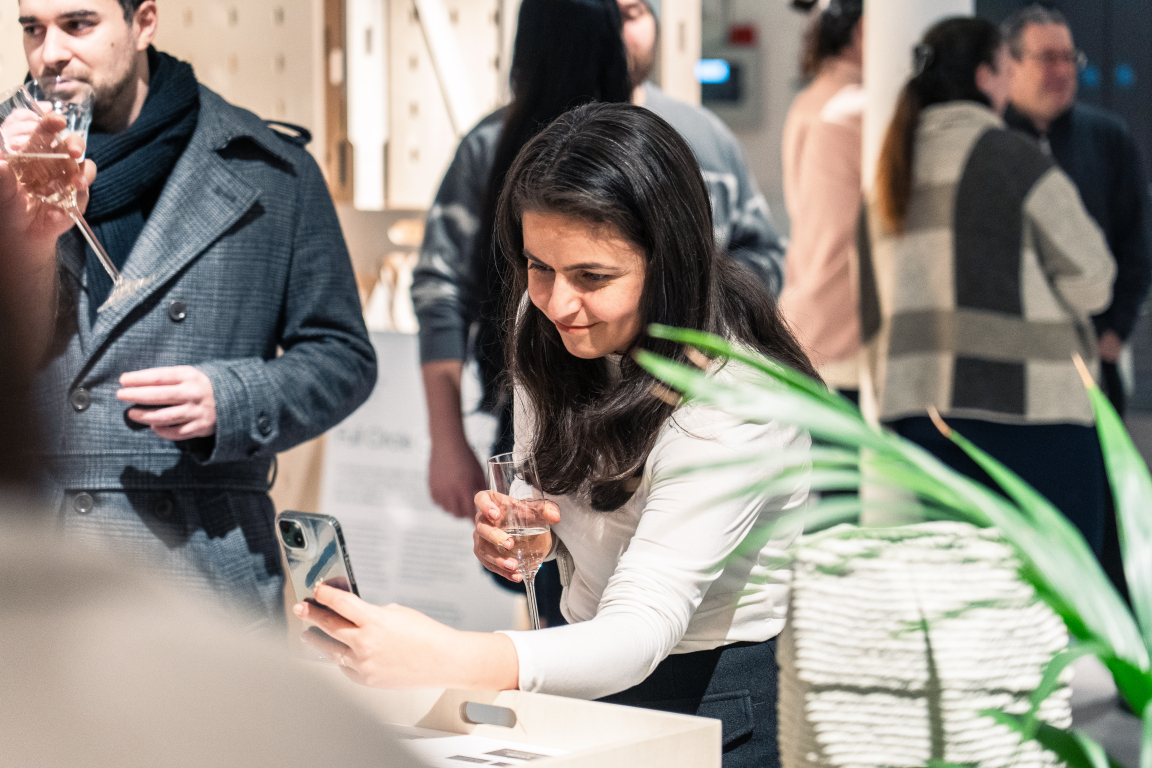
Credit: Tim Ainsworth
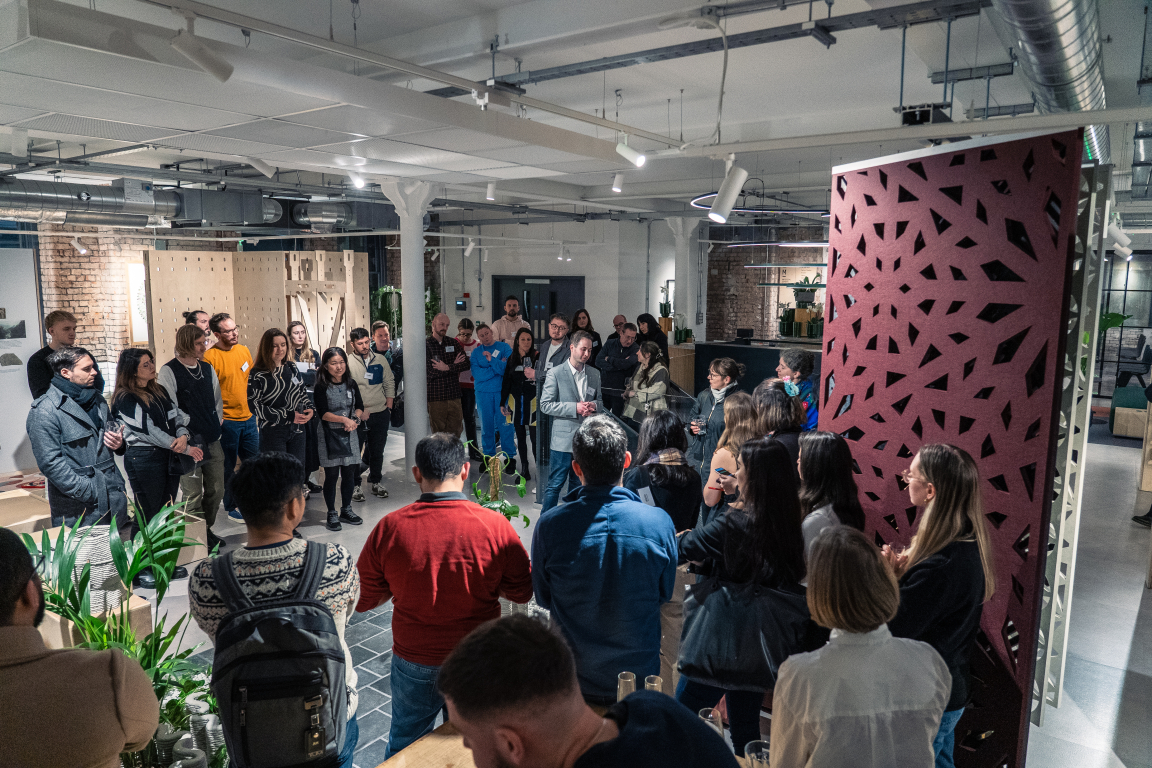
Credit: Tim Ainsworth
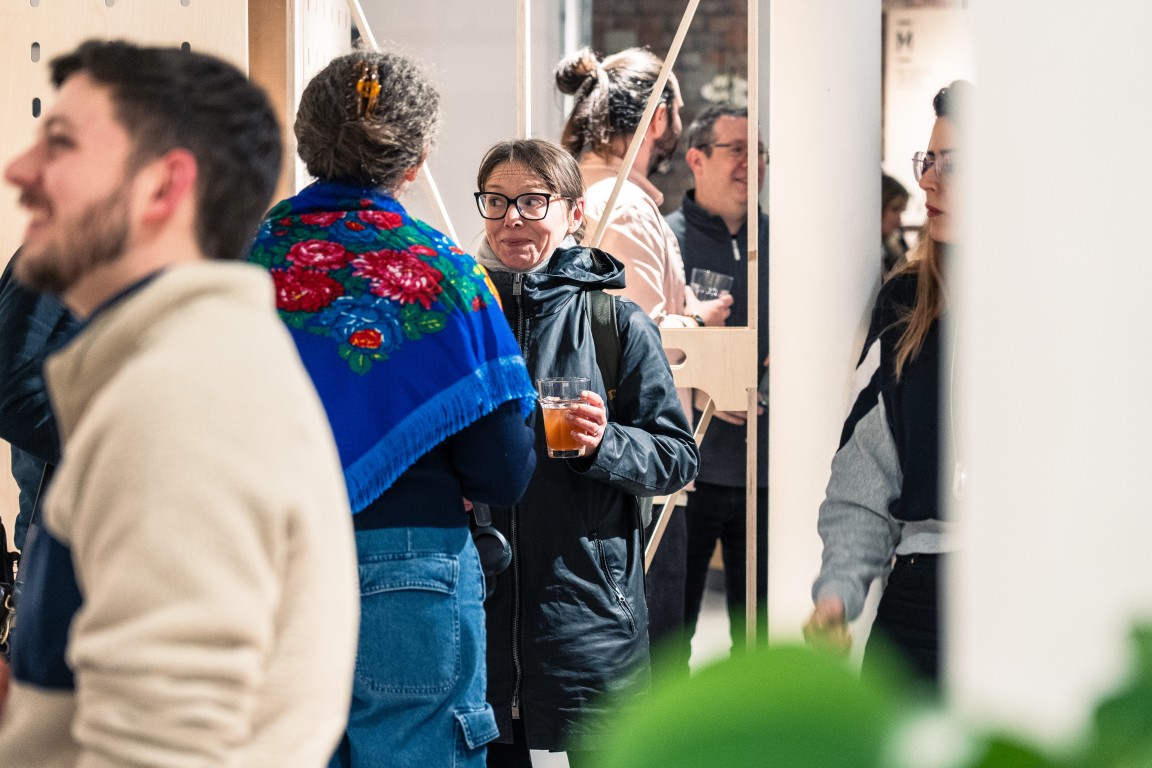
Credit: Tim Ainsworth
What could be next for 3D printed concrete utilising RFA?
In his talk, Nick highlighted that 3D printing is already becoming more commonplace as a method of faster, and more sustainable construction in the built environment, using this new housing development in Accrington, Lancashire, as a prime example.
In what will be a UK-first, 46 eco-homes have been given the green light, to be built by not-for-profit housing developer Building for Humanity, in partnership with Harcourt Technologies. As well as enhancing logistical efficiency, such as on-site times, with printing only requiring a matter of weeks due to the ability to build walls up to 500% faster than using conventional methods, waste is also said to be reduced - contributing to a more sustainably-sound project overall. Nick signified a huge opportunity for using the RFA mix in the construction of affordable housing schemes such as this.
In the utilities sector, a 3D printed water chamber has been created by ChangeMaker3D for use by United Utilities to support them on the road to Net Zero. Again, highlighting a potential use for this new waste-based mixture.
And considering a more infinite scale for the possibilities of 3D printing generally, Nick added that some of PrintCity's partners have been working with the European Space Agency on the development of moon bases - "humans will be returning to the moon, but this time they'll be 3D printing with the materials that they find there", commented Nick.
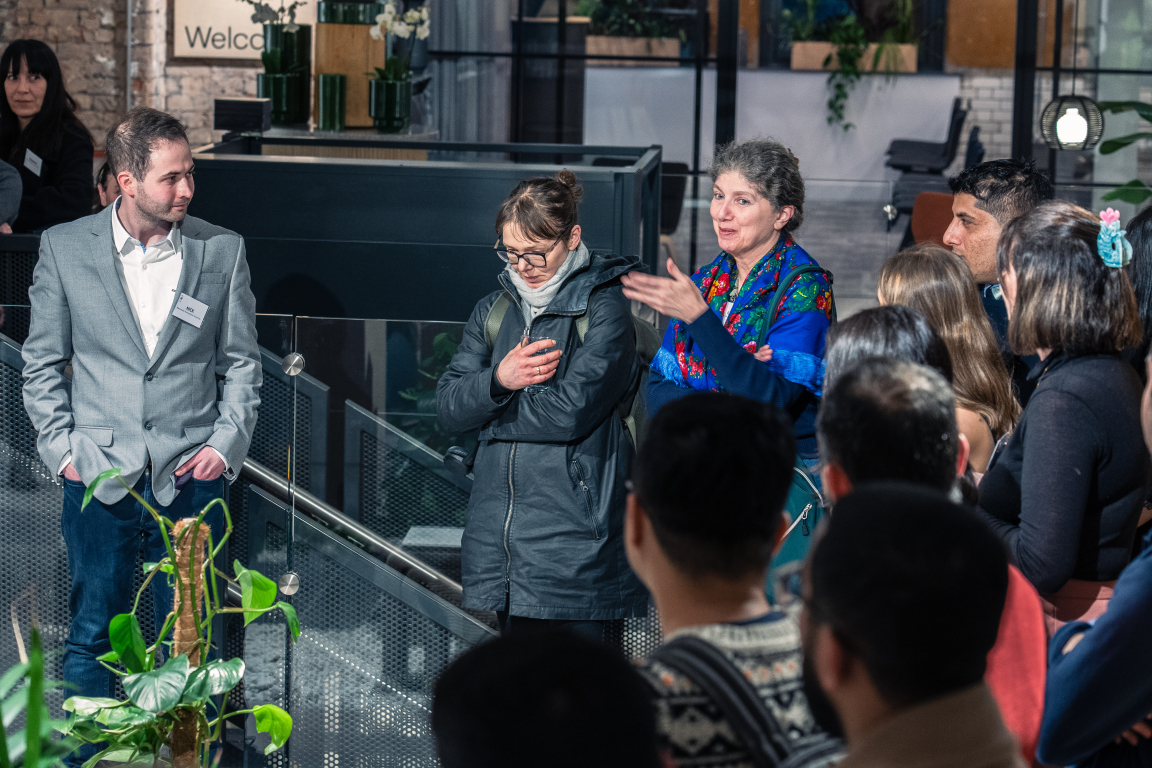
Credit: Tim Ainsworth
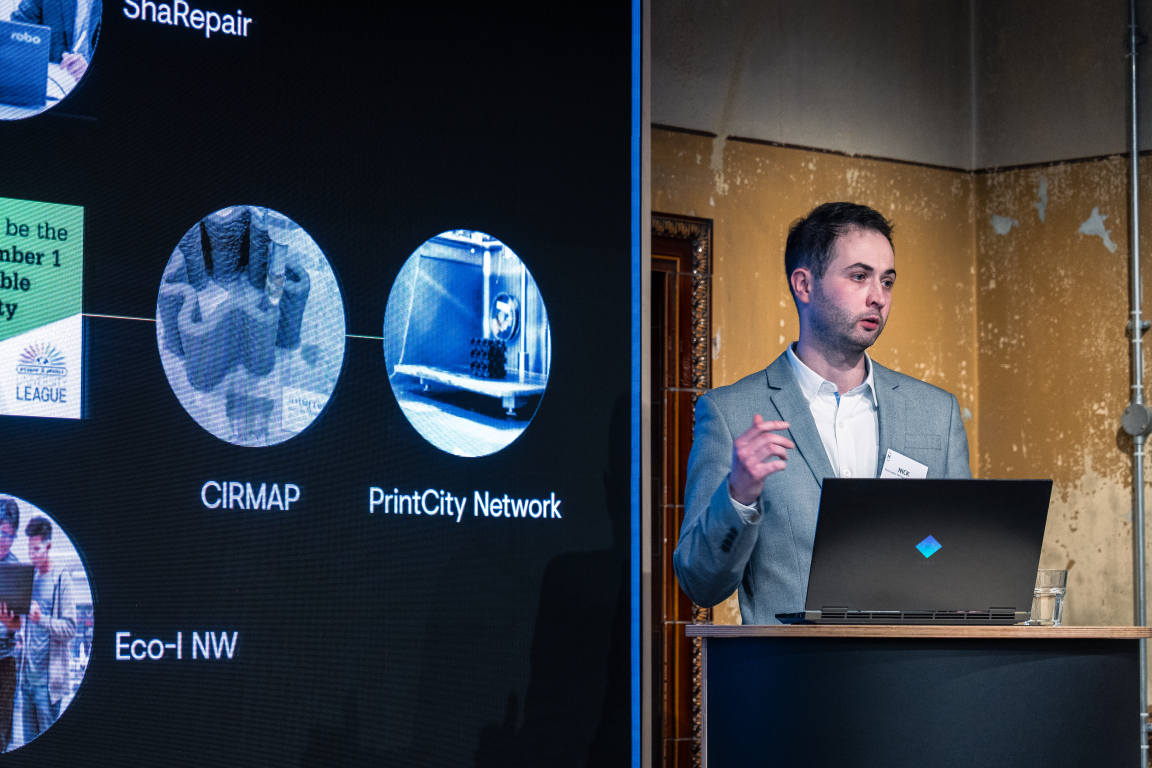
Credit: Tim Ainsworth
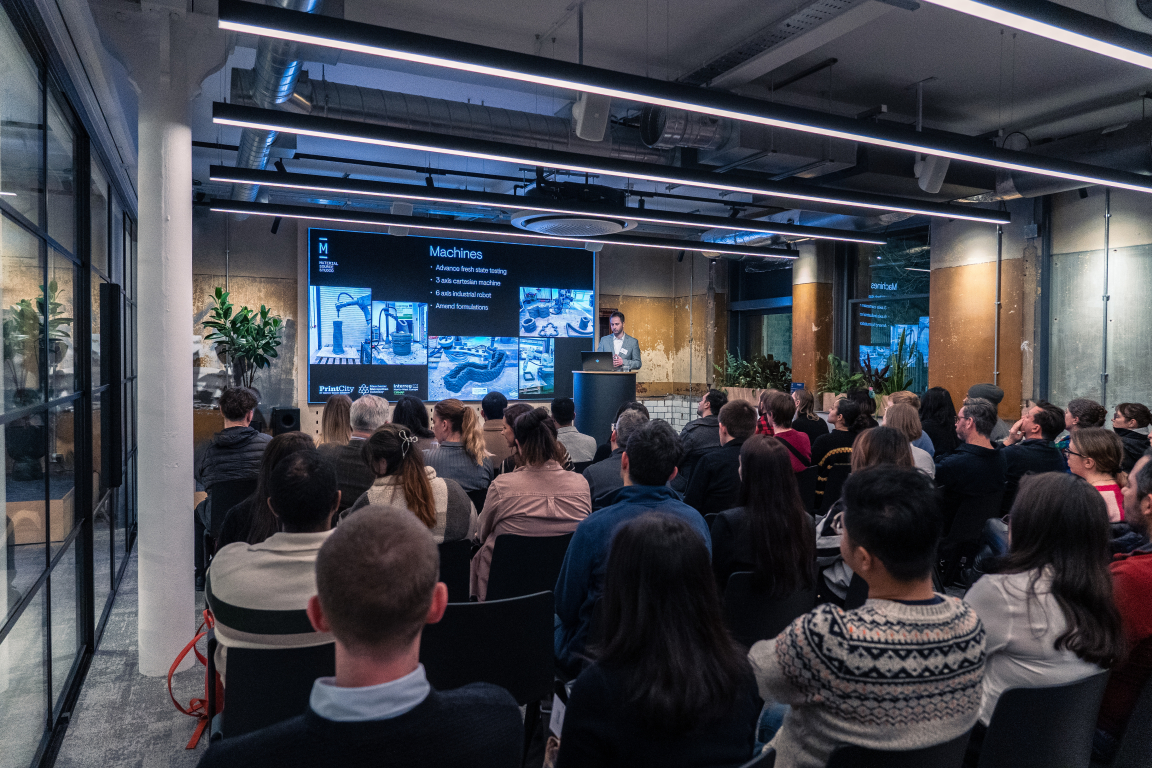
Credit: Tim Ainsworth
Can a fully circular future be achieved for concrete on a mass scale?
PrintCity was set up as a collaborative entity, partnering with like-minded peers to expand the possibilities of a more sustainable future for our built environment. While the CIRMAP project has resulted in a greatly successful, and highly applicable outcome for 3D printed concrete made using RFA, Nick acknowledges, there is more yet to explore.
With this in mind, PrintCity's material researchers are now looking into more sustainable alternatives for cement, while investigating other waste streams for incorporating into the material mix. In addition, Nick explained the team is looking at how their insights can inform the demolition waste management process from the start in terms of separation and sorting. Further testing is also being conducted to ascertain the longevity of the material, plus the amount of times it can be crushed and re-used.
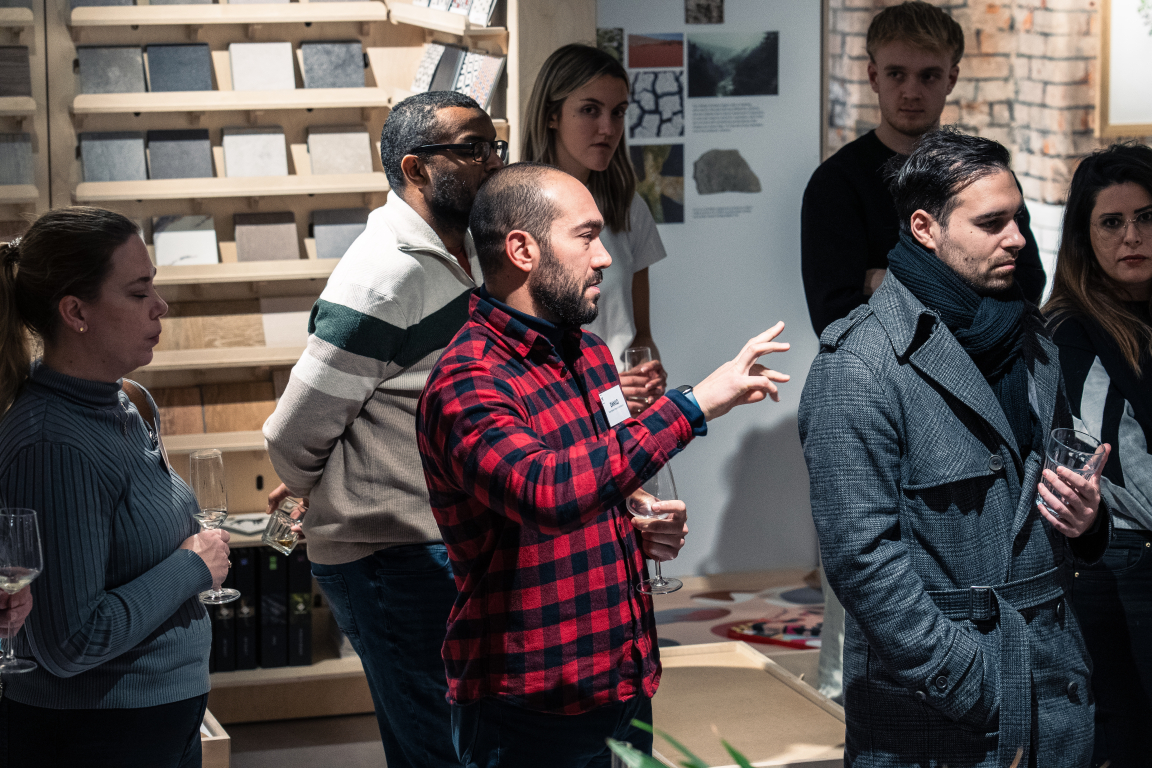
Credit: Tim Ainsworth
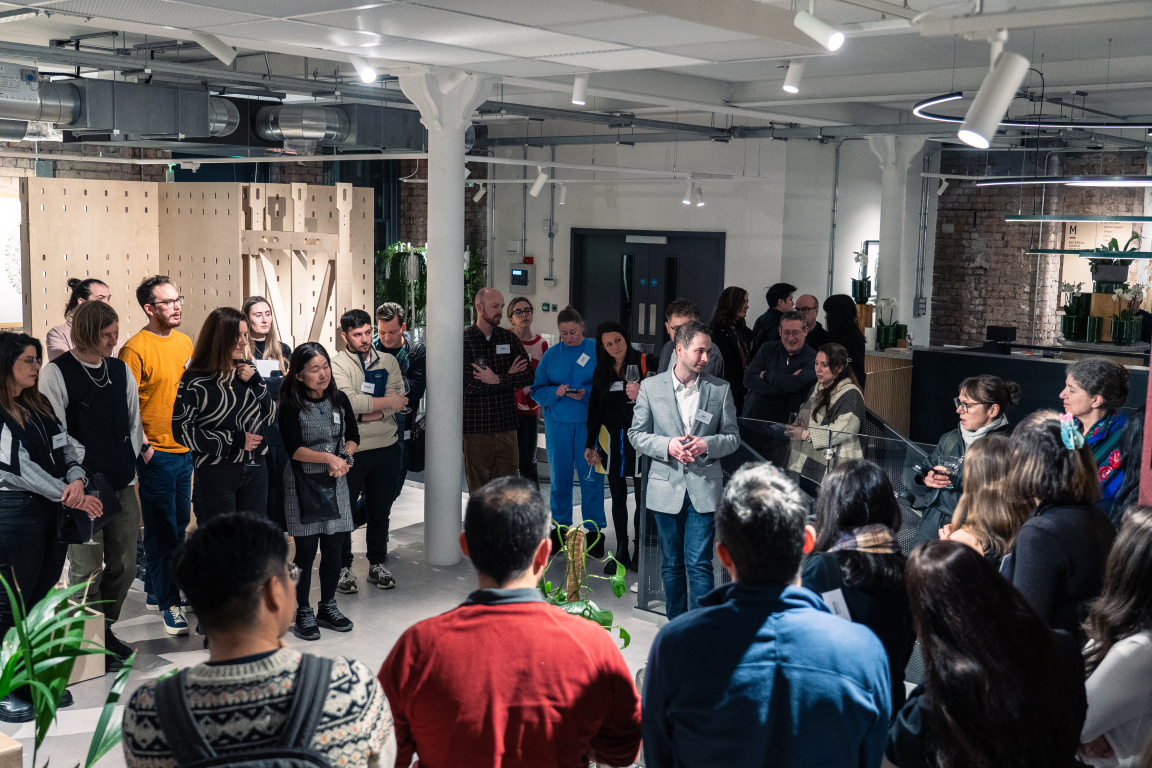
Credit: Tim Ainsworth
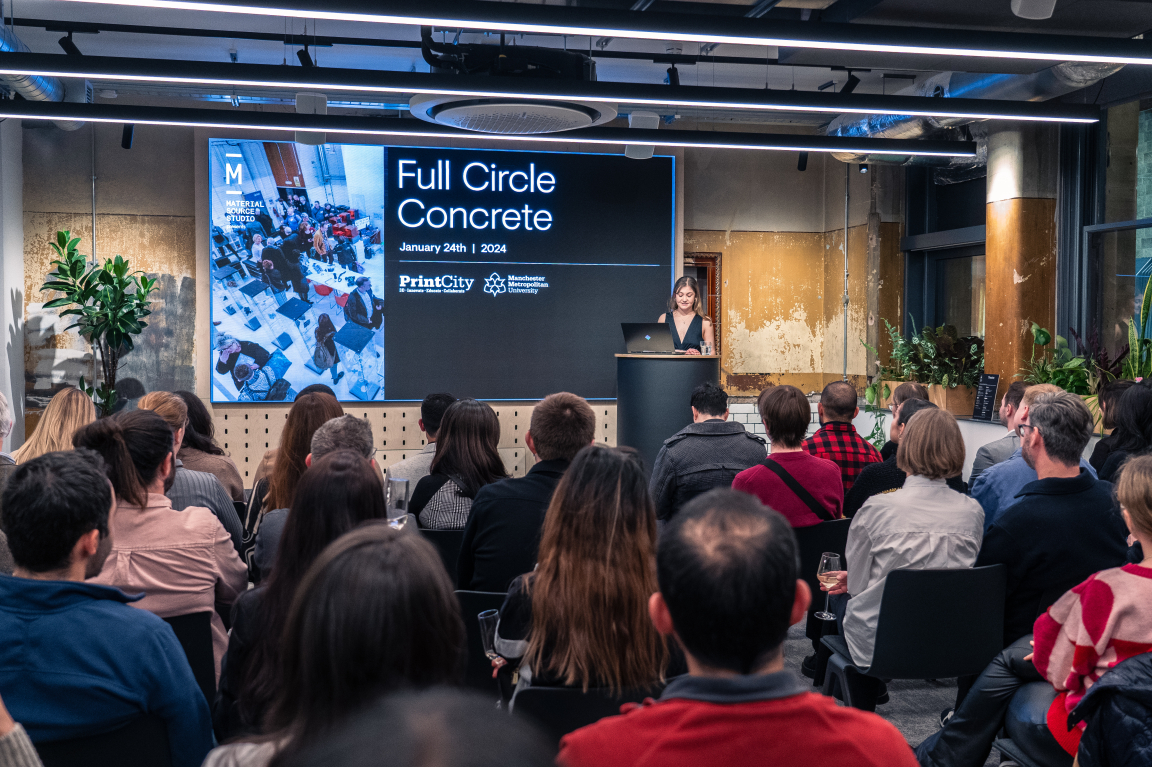
Material Source materialist Emily Bagshaw gives opening address [Credit: Tim Ainsworth]
Are you interested in supporting the development of fully circular concrete? If so, Nick and the PrintCity team would love to hear from you. And if you're using 3D print to contribute to a more circular future for the built environment, please let us know - Material Source is dedicated to facilitating these crucial development-enhancing discussions around the complex topic of sustainability in our sector, and beyond.


